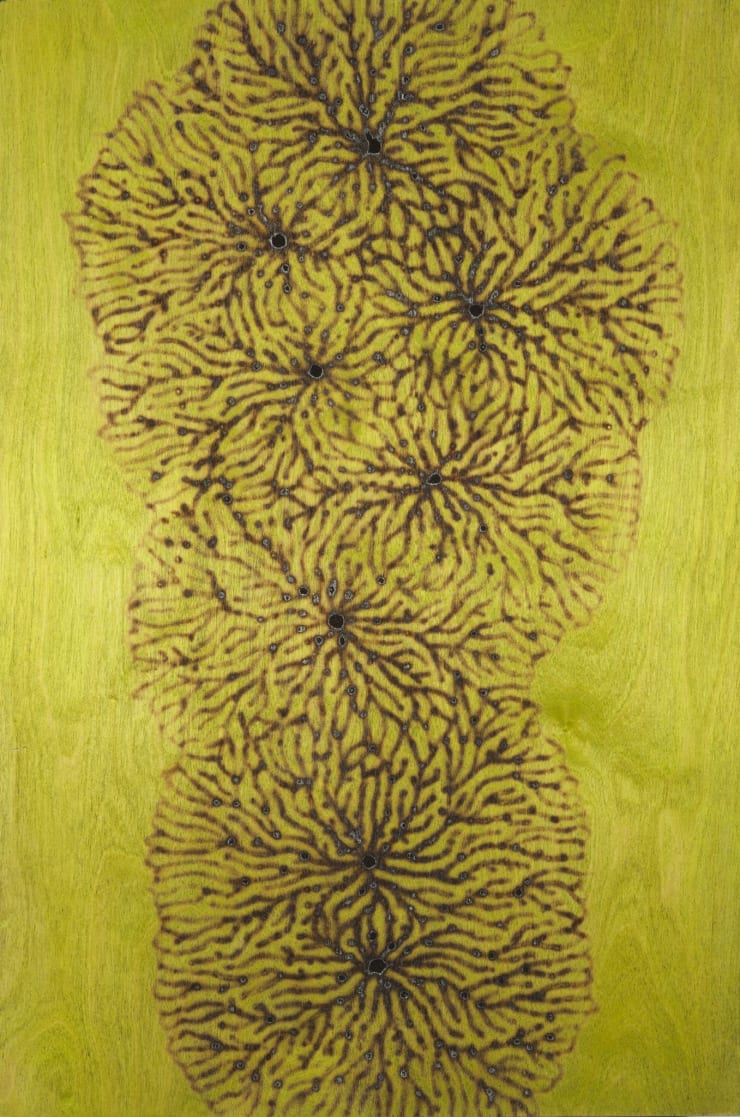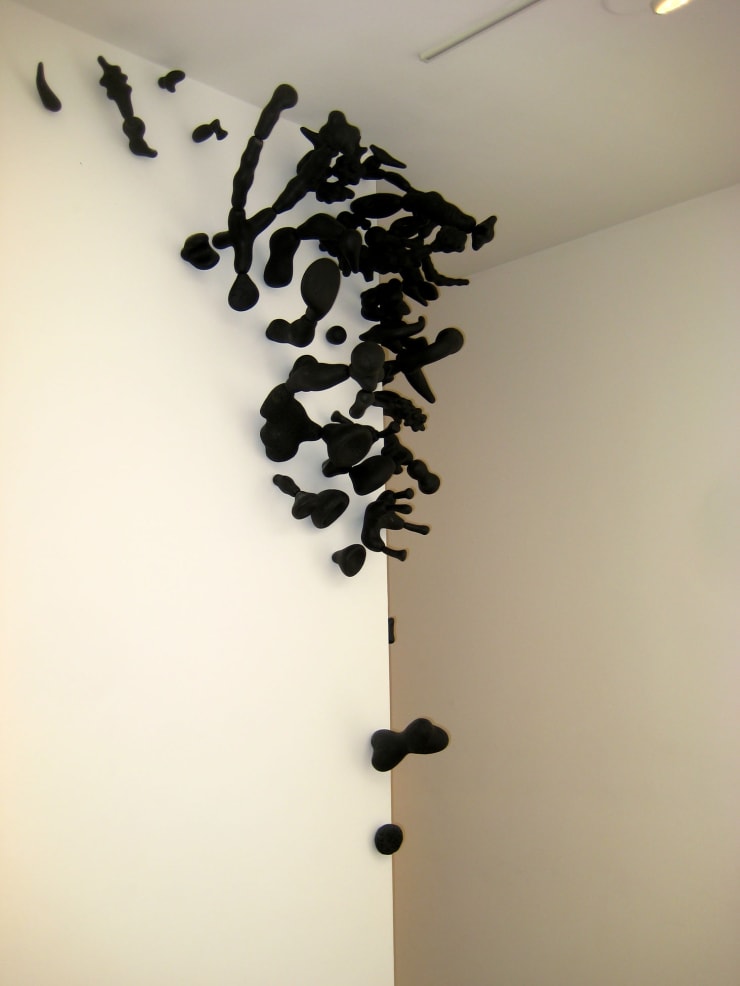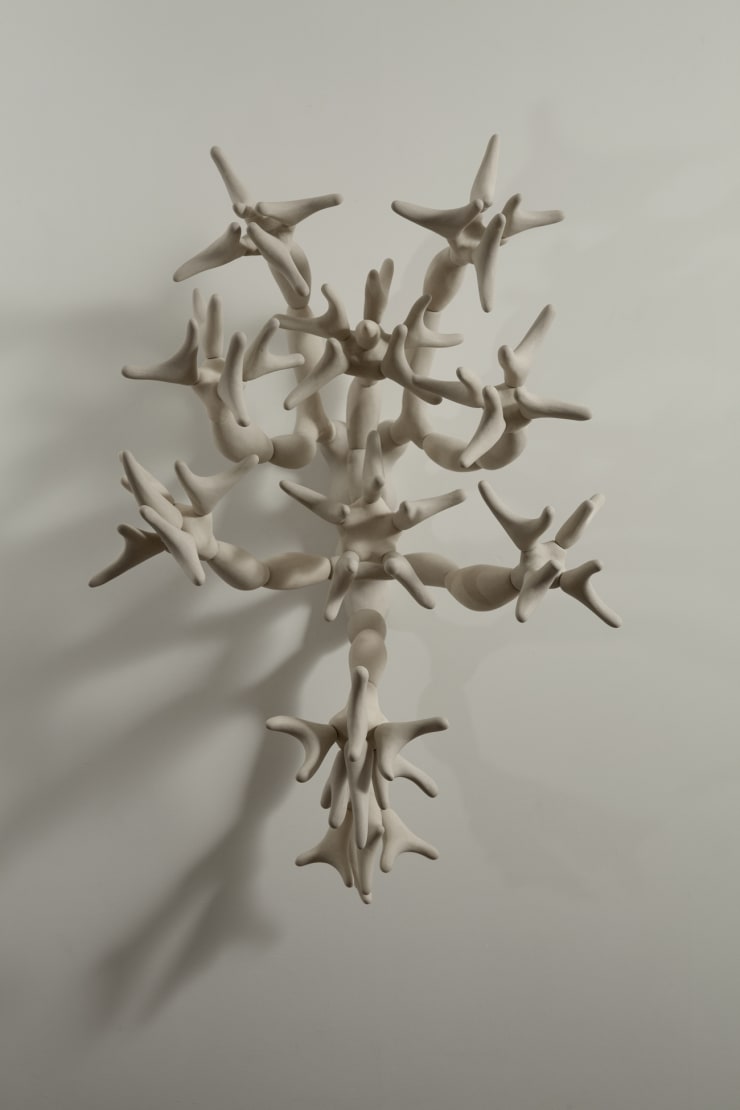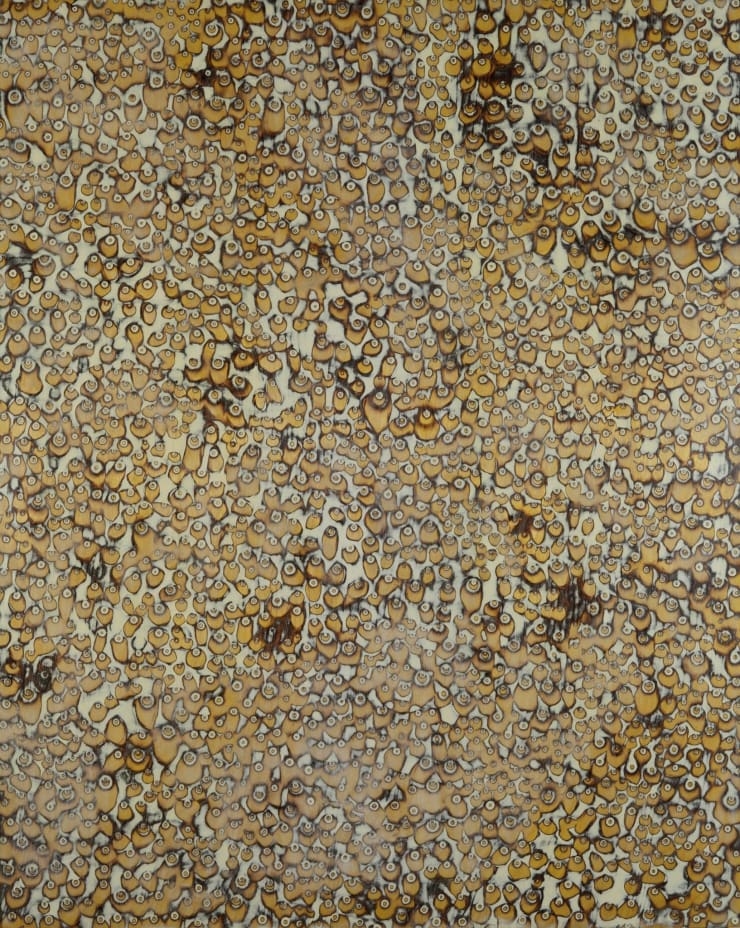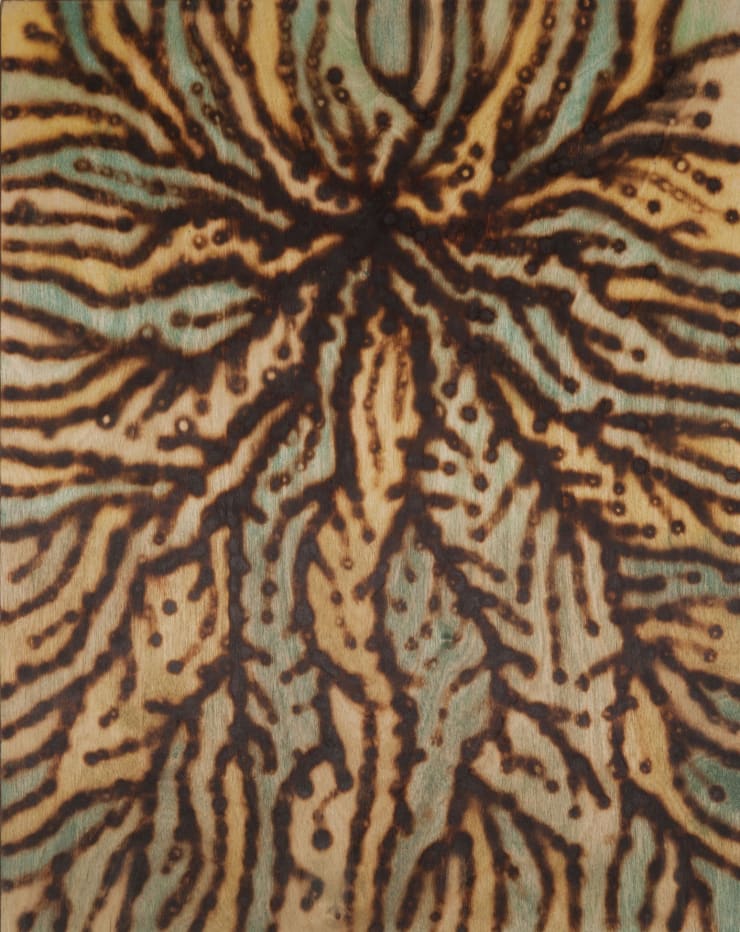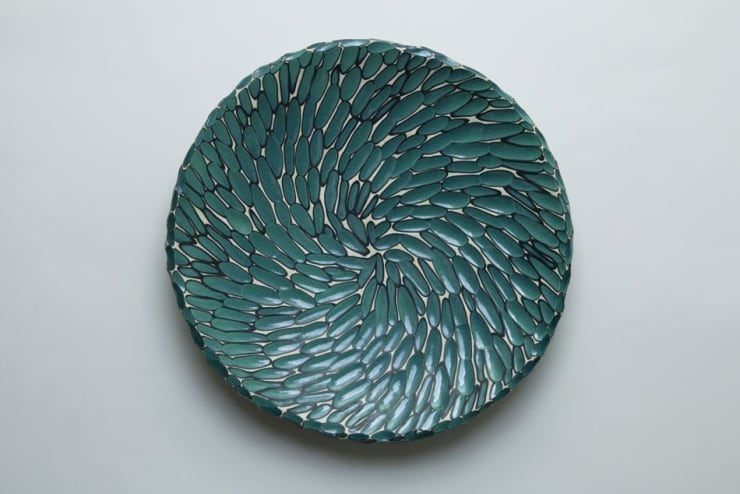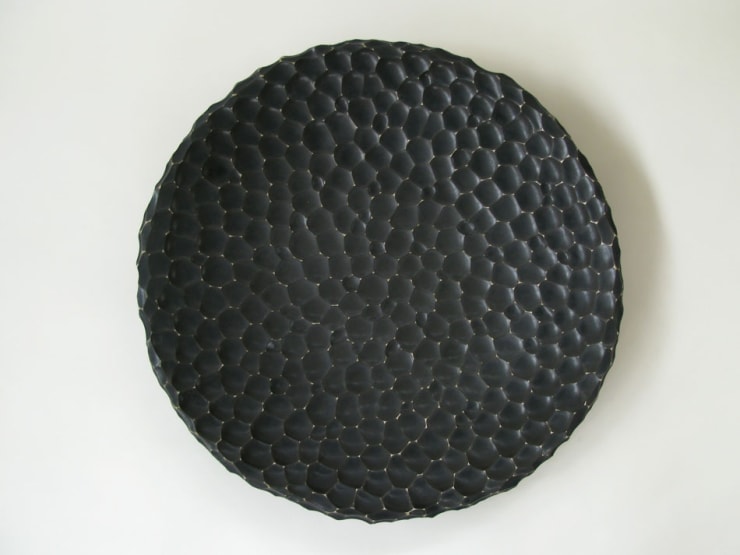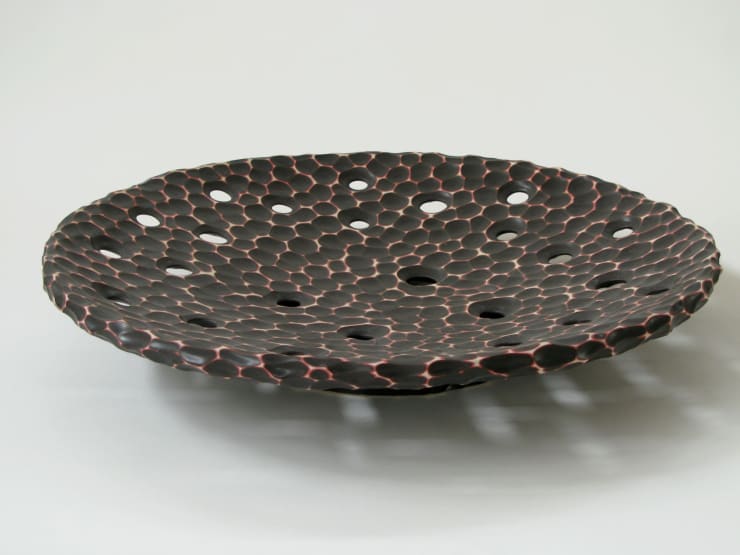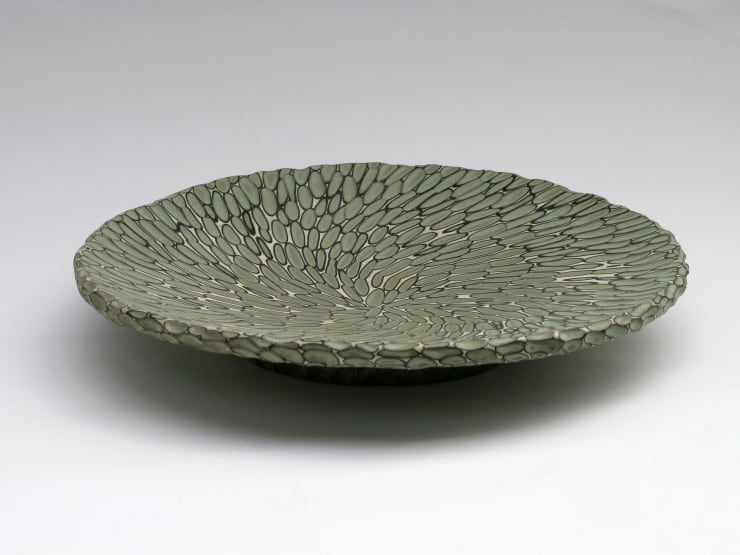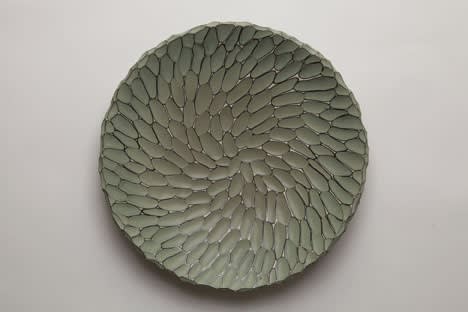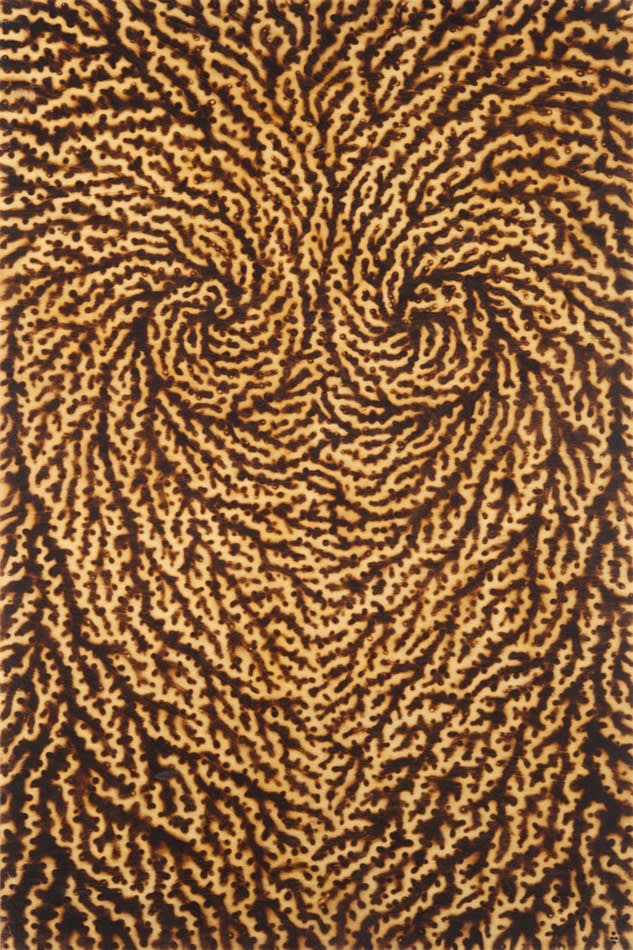Brad Miller: Primordial Algorithms
Edward Cella Art & Architecture announces a solo exhibition of a trilogy of new works by contemporary artist and sculptor Brad Miller. Using the elements of clay, wood and fire, Miller creates three interconnected yet discrete bodies of work that suggest the life generating systems found in nature. His installation of branching porcelain sculptures, burned wood panels inscribed with bisymmetric forms, and carved clay vessels evoke the cellular patterns that are the very genesis of life. The exhibition will be accompanied by a catalogue with an essay contributed by Jo Lauria.
Edward Cella Art & Architecture announces a solo exhibition of a trilogy of new works by contemporary artist and sculptor Brad Miller. Using the elements of clay, wood and fire, Miller creates three interconnected yet discrete bodies of work that suggest the life generating systems found in nature. His installation of branching porcelain sculptures, burned wood panels inscribed with bisymmetric forms, and carved clay vessels evoke the cellular patterns that are the very genesis of life. The exhibition will be accompanied by a catalogue with an essay contributed by Jo Lauria.
Miller transforms the gallery into a laboratory to construct and present his insights into the fundamental mechanisms of existence. A naturalist at heart, Miller continues to build upon these universal relationships which have appeared in various contexts throughout his career. Immersive in scale and yet all together new in form; Miller engages the viewer in an experimental journey traversing fire, water, earth and sentient cells. Offering compelling evidence of his own evolutionary theory, he juxtaposes sultry and bisymmetric patterns on burned wood panels against a reef of coral-like porcelain branching forms. Opposite these are polished clay vessels that call to mind cellular or atomic structures.
Using a vocabulary of ceramics, steel and wood to manipulate and construct his creations, Miller harnesses and applies fire as the catalyst to transform each medium. It is this proclivity that mirrors the earth’s own volatile birth of primordial formations. To recreate both the subtle and explosive quality entailed in such processes; Miller has spent years experimenting and refining his techniques to serve his creative objectives, including creating his own kiln and experimenting with a range of butane torches. Unified in concept, each component represented in the exhibition has, at one point or another, been subjected to burning, polishing, tumbling, or carving.
Brad Miller has exhibited nationally, and his work is in numerous public and private collections, including the Los Angeles County Museum of Art, Brooklyn Museum, Denver Art Museum, and the Renwick Gallery of the Smithsonian. Primordial Algorithms is the second solo exhibition in Los Angeles for the artist, following more than thirty years after his debut at the Craft and Folk Art Museum for which Buckminster Fuller wrote, “When I encounter work so conceptualized and communicated as that of Bradley Miller’s, I hasten to bid others to observe his work and I am confident that they too will be equally inspired by it”. The same museum will feature his work in their upcoming Pacific Time exhibition entitled, The Golden State of Craft: California 1960s - 1980s. Brad Miller pursued his graduate studies at the University of Oregon. Miller was the executive director of Anderson Ranch Arts Center in Aspen, CO from 1984 to 1992. He currently maintains a studio in Venice Beach, CA.
EXHIBITION PROGRAM
In Conversation: Jo Lauria and Brad Miller
Saturday, April 30, 2011/ 4:00 - 6:00 PM
Join Jo Lauria, independent curator and an art and design historian, in a discussion with Brad Miller about the new freedoms of contemporary art that empower artists to cross all categorical boundaries in materials and techniques, melding fine art, craft and design. Are these newfound freedoms harbingers of the approaching end of the era of hierarchical divisions in the arts?
Jo Lauria has degrees in art history and communication arts from Yale University and Loyola Marymount University, and in studio art from Otis College of Art and Design. Formerly she held the position of assistant curator of decorative arts at the Los Angeles County Museum of Art (LACMA), specializing in modern and contemporary decorative arts, craft, and design. She has published extensively, organized numerous exhibitions, and produced and directed multimedia presentations and documentary films. Currently on view in Los Angeles are two exhibitions that Jo Lauria co-organized: A Marriage of Craft and Design, The Work of Evelyn and Jerome Ackerman at Craft and Folk Art Museum; and Splendid Entities, 25 Years of Objects by Phyllis Green at Otis Ben Maltz Gallery.
In Conversation: Marlena Donohue, Jean Michel Crettaz, and Dr. Rob Spruijt
Saturday, May 28, 2011/ 4:00 - 6:00 PM
Los Angeles Join Jean Michel Crettaz, Marlena Donohue and Dr. Rob Spruijt in a discussion of the concepts of symmetry, rhythm, pattern, biomorphism, selective randomness as they occur in parallel and spontaneous arrangements in the natural word and the visual arts. Raising provocative questions about the relationship of these correspondences to creativity, the open dialogue seeks out essential parameters of design at the mirco and macro levels.
Marlena Donohue is an art historian, critic, essayist, editor, independent curator and Associate Professor of Art History at Otis College of Art and Design. Donohue received her B.A. in psychology at UCLA and her MA in Art History at USC. She has worked as art critic for several newspapers and magazines including Sculpture Magazine, The Los Angeles Times, Artweek, and London Art Newspaper.
Jean Michel Crettaz is an architect, media artist and head of the Grad Theory Program at SciArc. Crettaz uses biomorphism and natural phenomenon to design lived spaces. He studied visual arts, engineering, mathematics and architecture in Switzerland, at the Cooper Union in New York and at the Architectural Association in London. After graduating from the AA with diploma prize and honors in 1988, he engaged in extensive world-wide educational travel programs. He served as the coordinator of Visual Studies at SciArc for the past 4 years, and is currently running the MediaSCAPES postgraduate program.
Dr. Rob Spruijt received a PhD in Psychology from the Univ. of Amsterdam and B.F.A. from Otis College of art and Design. He is currently Associate Professor of Liberal Arts and Sciences at Otis College of art and Design. Spruijt is also a leading writer on creativity and brain function. In addition to his extensive academic articles and publications on human psychology and perception; he is a expert on Dutch still life painting and exhibits his contemporary still life paintings regularly.
-
 Brad Miller, Shadow, 2011
Brad Miller, Shadow, 2011 -
 Brad Miller, Field, 2011
Brad Miller, Field, 2011 -
 Brad Miller, 5 or 6, 2010
Brad Miller, 5 or 6, 2010 -
 Brad Miller, Normal, 2010
Brad Miller, Normal, 2010 -
 Brad Miller, Device, 2010
Brad Miller, Device, 2010 -
 Brad Miller, Jimmied, 2010
Brad Miller, Jimmied, 2010 -
 Brad Miller, Former, 2011
Brad Miller, Former, 2011 -
 Brad Miller, Clouded, 2011
Brad Miller, Clouded, 2011 -
 Brad Miller, All in All, 2010
Brad Miller, All in All, 2010 -
 Brad Miller, Stray, 2011
Brad Miller, Stray, 2011 -
 Brad Miller, Sampler, 2011
Brad Miller, Sampler, 2011 -
 Brad Miller, Wreck, 2011
Brad Miller, Wreck, 2011 -
 Brad Miller, Feelings, 2011
Brad Miller, Feelings, 2011 -
 Brad Miller, Spreader, 2010
Brad Miller, Spreader, 2010 -
 Brad Miller, Reacher, 2010
Brad Miller, Reacher, 2010 -
 Brad Miller, Big Daddy, 2011
Brad Miller, Big Daddy, 2011 -
 Brad Miller, Extra, 2011
Brad Miller, Extra, 2011 -
 Brad Miller, Range, 2011
Brad Miller, Range, 2011 -
 Brad Miller, G.P., 2011
Brad Miller, G.P., 2011 -
 Brad Miller, Ghost, 2011
Brad Miller, Ghost, 2011 -
 Brad Miller, Navigational, 2011
Brad Miller, Navigational, 2011 -
 Brad Miller, P21-10, 2010
Brad Miller, P21-10, 2010 -
 Brad Miller, P20-11, 2010
Brad Miller, P20-11, 2010 -
 Brad Miller, P2-11, 2011
Brad Miller, P2-11, 2011 -
 Brad Miller, P15-10, 2010
Brad Miller, P15-10, 2010 -
 Brad Miller, P6-11, 22011
Brad Miller, P6-11, 22011 -
 Brad Miller, P4-11, 2011
Brad Miller, P4-11, 2011 -
 Brad Miller, P17-10, 2010
Brad Miller, P17-10, 2010 -
 Brad Miller, P7-11, 2011
Brad Miller, P7-11, 2011 -
 Brad Miller, P3-11, 2011
Brad Miller, P3-11, 2011 -
 Brad Miller, S3-06, 2006
Brad Miller, S3-06, 2006 -
 Brad Miller, P14-10, 2010
Brad Miller, P14-10, 2010 -
 Brad Miller, P1-10, 2010
Brad Miller, P1-10, 2010 -
 Brad Miller, P18-10, 2010
Brad Miller, P18-10, 2010 -
 Brad Miller, P7-10, 2010
Brad Miller, P7-10, 2010 -
 Brad Miller, P8-11, 2011
Brad Miller, P8-11, 2011 -
 Brad Miller, P5-11, 2011
Brad Miller, P5-11, 2011 -
 Brad Miller, P1-11, 2011
Brad Miller, P1-11, 2011 -
 Brad Miller, P16-10, 2010
Brad Miller, P16-10, 2010 -
 Brad Miller, Big, 2004
Brad Miller, Big, 2004 -
 Brad Miller, Rotators #1, 2004
Brad Miller, Rotators #1, 2004


















